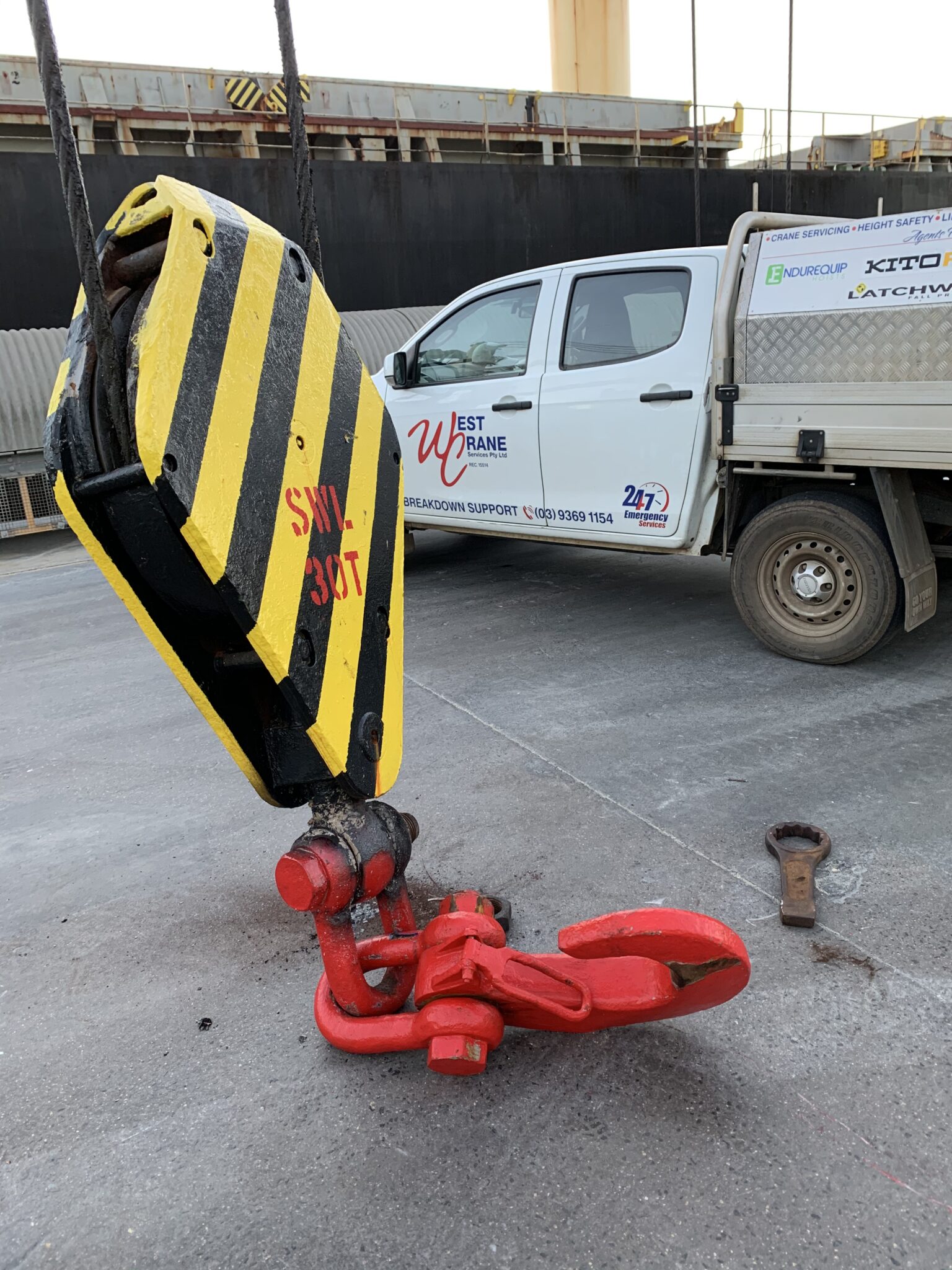If you own or operate an overhead crane or hoist in Australia, you’ve likely heard of the term Mechanical Major Inspection — but what does it actually involve, when is it required, and are there any alternatives?
At West Crane Services, we conduct mechanical major inspections across a wide range of industries and crane types. This blog breaks down the key information every crane owner or site manager needs to understand about this critical inspection process.
What is a Mechanical Major Inspection?
A mechanical major inspection (MMI) is a comprehensive assessment of the mechanical and structural integrity of a crane or hoist, typically triggered when:
- The equipment reaches the end of its design life (commonly defined as 10 years of operation, or a certain number of operating hours or cycles).
- The equipment has been in harsh or high-duty environments that may accelerate wear.
- There has been significant mechanical damage, modifications, or repairs.
- It’s required as part of a compliance audit, especially in high-risk industries like mining, oil and gas, or defence.
The inspection aligns with Australian Standards, including:
- AS2550.1 – Safe use of cranes
- AS1418 – Design and operation of cranes and hoists
- AS2550.3 – Specific to bridge and gantry cranes
What’s Involved in a Mechanical Major Inspection?
A properly conducted major inspection includes:
1. Strip-down and Visual Inspection
The crane or hoist is taken out of service, disassembled, and visually inspected. This includes:
- Gearboxes
- Wire ropes or chains
- Sheaves, brakes, wheels, and end carriages
- Couplings, shafts, and bearings
2. Non-Destructive Testing (NDT)
Critical components (Sheaves, drums, gears etc.) undergo NDT to detect fatigue cracks or internal flaws that aren’t visible to the naked eye.
3. Measurement and Tolerances
All mechanical components are measured against OEM tolerances. Excessive wear may require replacement or repair.
4. Documentation
All findings, test results, and recommendations are documented and presented in a final Major Inspection Report — a critical record for compliance and future audits. Major Inspections must be overseen by a qualified machanical engineer.
Is it mandatory?
In most industrial settings, yes. Under Australian law and WorkSafe guidance, owners are responsible for ensuring cranes remain safe and compliant throughout their lifecycle.
Failing to conduct a mechanical major inspection after the end of design life can lead to serious legal and safety consequences — especially if a failure occurs.
Are there alternatives to a Full Major Inspection?
Sometimes. Depending on the condition of your equipment and how it has been used, other options may include:
Assessment for Continued Safe Use (ACSU)
If your crane has low hours or has been used in a light-duty environment, we may be able to carry out a ACSU and obtain engineering sign-off for extended use without a full major strip-down.
Partial Inspection with Engineering Review
If only some components have reached their design limits (e.g., hoist only), a targeted mechanical inspection may be appropriate, with review and certification from a qualified engineer.
Upgrade or Replacement
In some cases, replacing outdated components — or the entire hoist — is more economical than repairing. We’ll help you compare costs and lifecycle benefits.
Why choose West Crane Services for your Major Inspections?
- Experience across all makes and models (including Guralp, Kito, GIS, Demag, Street, and more)
- In-house engineers and technicians — no outsourcing delays
- Detailed reporting for full compliance
- Fast turnaround to minimise downtime
- Options tailored to your site and budget

 24/7 Breakdown Service
24/7 Breakdown Service